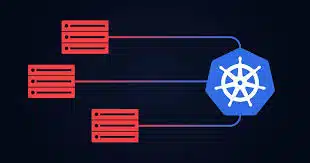-
- Troubleshooting Kubernetes Cluster Failures on Bare-Metal Linux Deployments
- Understanding Common Kubernetes Cluster Failures
- Configuration Steps for Troubleshooting
- Step 1: Check Node Status
- Step 2: Inspect Pod Status
- Step 3: Review Logs
- Step 4: Network Troubleshooting
- Step 5: Resource Monitoring
- Practical Examples
- Best Practices for Kubernetes Cluster Management
- Case Studies and Statistics
- Conclusion
Troubleshooting Kubernetes Cluster Failures on Bare-Metal Linux Deployments
Kubernetes has become the de facto standard for container orchestration, enabling organizations to manage applications at scale. However, deploying Kubernetes on bare-metal Linux environments can introduce unique challenges, particularly when it comes to troubleshooting cluster failures. Understanding how to effectively diagnose and resolve these issues is crucial for maintaining high availability and performance. This guide aims to provide a comprehensive approach to troubleshooting Kubernetes cluster failures, offering actionable steps, practical examples, and best practices to enhance your operational efficiency.
Understanding Common Kubernetes Cluster Failures
Before diving into troubleshooting, it’s essential to recognize the common types of failures that can occur in a Kubernetes cluster:
- Node Failures: Hardware or software issues that cause nodes to become unresponsive.
- Network Issues: Problems with network connectivity affecting pod communication.
- Resource Exhaustion: Insufficient CPU, memory, or disk space leading to degraded performance.
- Configuration Errors: Misconfigurations in YAML files or Kubernetes resources.
Configuration Steps for Troubleshooting
Step 1: Check Node Status
Begin by checking the status of your nodes to identify any that are not ready:
kubectl get nodesNodes that are not in the “Ready” state may indicate underlying issues. Use the following command to get more details:
kubectl describe node Step 2: Inspect Pod Status
Next, inspect the status of the pods running on the affected nodes:
kubectl get pods --all-namespacesFor pods that are in a “CrashLoopBackOff” or “Error” state, use:
kubectl describe pod -n Step 3: Review Logs
Logs are invaluable for diagnosing issues. Check the logs of the problematic pods:
kubectl logs -n For system components like kubelet or kube-apiserver, check the logs on the node directly:
journalctl -u kubeletStep 4: Network Troubleshooting
If network issues are suspected, verify the network configuration:
- Check the CNI (Container Network Interface) plugin logs.
- Use tools like
pingandcurlto test connectivity between pods.
Step 5: Resource Monitoring
Monitor resource usage to identify exhaustion issues:
kubectl top nodeskubectl top pods --all-namespacesConsider using monitoring tools like Prometheus and Grafana for a more comprehensive view.
Practical Examples
Consider a scenario where a node becomes unresponsive due to high CPU usage. By following the steps outlined above, you can identify the problematic pod consuming excessive resources:
kubectl top pods --all-namespaces --sort-by=cpuOnce identified, you can either scale down the deployment or optimize the application to reduce resource consumption.
Best Practices for Kubernetes Cluster Management
- Regularly update Kubernetes and its components to the latest stable versions.
- Implement resource limits and requests for all deployments to prevent resource exhaustion.
- Use health checks (liveness and readiness probes) to ensure pods are functioning correctly.
- Set up monitoring and alerting systems to proactively identify issues.
Case Studies and Statistics
A study by the Cloud Native Computing Foundation (CNCF) found that 70% of organizations experienced downtime due to misconfigurations. This statistic underscores the importance of proper configuration management and monitoring in Kubernetes environments.
Conclusion
Troubleshooting Kubernetes cluster failures on bare-metal Linux deployments requires a systematic approach to identify and resolve issues effectively. By following the outlined steps, utilizing practical examples, and adhering to best practices, you can enhance the stability and performance of your Kubernetes clusters. Remember, proactive monitoring and regular updates are key to preventing many common issues before they escalate into significant failures.
